SUBJECTS
GRADE
Show Results
The Great American Bison
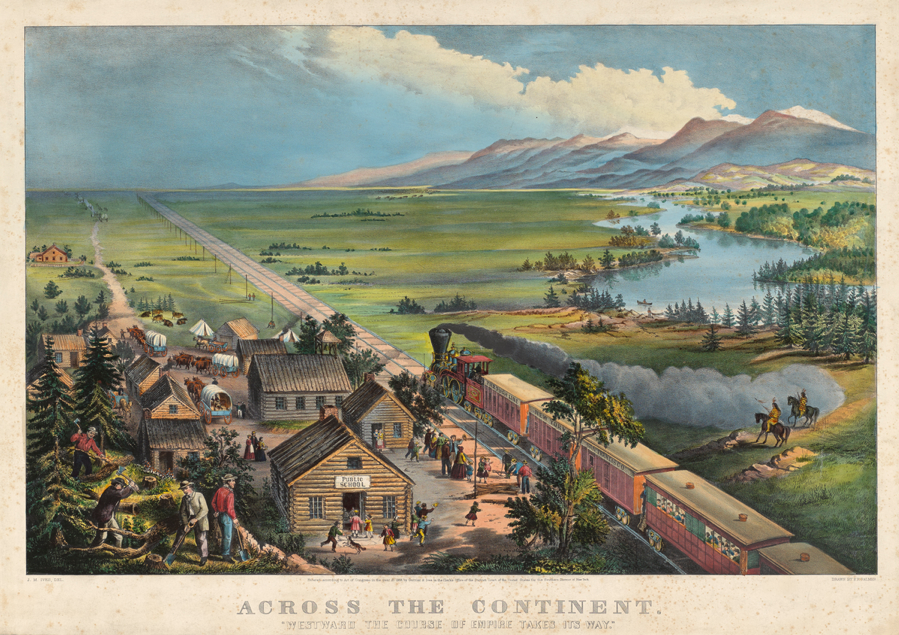
Lesson Summary
- Understand the impact of the Transcontinental Railroad on American bison herds.
- Compare and contrast differing perspectives.
- Upcycle found objects into artwork.
Lesson Plan and Procedure
Lesson Key Facts
- Grade(s): 4, 5, 6
- Subject(s): Drama, English Language Arts, Social Studies, Visual Arts, Native American
- Duration of lesson: 45-60 minutes
- Author(s): Brenda Beyal
Note: This lesson is one of a group of lessons created to teach about the Transcontinental Railroad through the arts. Titles of the lessons can be found in the additional resources section below.
Preparation
- The day before the lesson, ask students to fill a bag with found objects that were on their way to the trash receptacle or recycling bin. Remind students to be aware of safety issues and cleanliness. If a container had food or liquid in it, ask them to wash it out before it is brought into the classroom.
- Preview the following videos and choose one to introduce the Transcontinental Railroad:
https://www.youtube.com/watch?v=8fjIE43cVsM
https://www.youtube.com/watch?v=0CdAzizWiyI - Gather materials listed in the equipment and materials section below.
Progress and Decline
Teacher: Today we are going to view a short video about the Transcontinental Railroad. As you watch, think about how the building of the railroad can be viewed as progress and how it can also be viewed as decline.
Show one of the two videos and ask students to respond to questions about the video.
"Coast to Coast": https://www.youtube.com/watch?v=8fjIE43cVsM
"Making Tracks": https://www.youtube.com/watch?v=0CdAzizWiyI
Discussion questions:
- How did the Transcontinental Railroad help the country progress?
- How did it cause a decline?
- Why is it important to view history from multiple perspectives?
Teacher: Native American tribes who hunted, gathered, and lived in the path of the railroad never imagined the disruption and dire circumstances that came with the railroad’s progress across the plains. The Cheyenne, Lakota, and Arapaho tribes saw the landscape altered forever. However, the Transcontinental Railroad changed the mode of transportation for many from east to west. Travel that once took six months overland or around South America to the west coast now took one week. Goods and services needed on both sides of the country could now be shipped quickly.
Show students the first slide, “Across the Continent,” on the PowerPoint presentation. Ask them to share what they see and what thoughts come to their minds. Help students compare and contrast each side of the track and what it means to them. Have several students come to the front and choose a person, animal or object in the print and stand as a frozen silhouette. Introduce a drama tool called thought-tracking. There are two resources explaining the process in the additional resources section of this lesson. The thought-tracking activity should take about five minutes.
Teacher: Those who have come to the front will choose a character in the picture and then freeze. When I tap their shoulders, they should be ready to speak aloud their thoughts, feelings, and reaction to what is happening around them in the role they have taken on. As an audience, we are respectful and allow the characters to voice their thoughts without judgement.
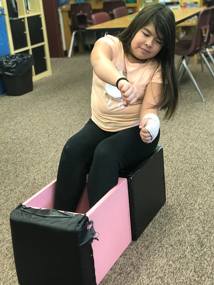
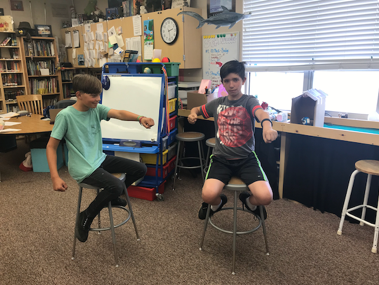

Give examples as needed and proceed with the thought-tracking activity. After the activity, explain that there are many layers and perspectives to events and experiences, especially during the building of the Transcontinental Railroad. Share that today, as a class, you will explore a perspective that, many times, is not fully understood. Explain how we can learn from the experience of others.
The Native American and the Great American Bison
Teacher: (Show slide two.) It is estimated that between 30 and 40 million bison roamed the plains of North America when construction of the Transcontinental Railroad began. They roamed from the Gulf Coast to Alaska and from the Missouri River to the Rockies.
Teacher: (Show slide three.) The Plains Indians depended on the bison for everything. It was their life source. “Red Cloud in his last public address to the Oglala people said, ‘We told them that the supernatural powers, Taku Wakan, had given to the Lakota the buffalo for food and clothing. We told them that where the buffalo ranged, that was our country. We told them the country of the buffalo was the country of the Lakota. We told them that the buffalo must have their country and the Lakota must have the buffalo'” (1903).

Teacher: (Show slide four.) The Plains Indians used every part of this massive animal, which could weigh as much as a small car. And they only killed what they needed in order to survive. Study this image and share with the rest of us how different parts of the bison were used.
If time permits, watch this video on the many uses of the bison: https://www.youtube.com/watch?v=a20m3Q78a5g
Teacher: (Show slide five.) Native Americans witnessed the decline of wild game and hunting grounds as tracks were laid and more and more people headed west. The land that once was open to the bison and to them was being slowly eliminated, and the Arapaho, Cheyenne, Lakota and began to feel its effects.
Teacher: (Show slide six.) The Transcontinental Railroad is considered the greatest contributor to the loss of the bison. Herds that once numbered between 30 and 40 million dwindled. As construction began, the bison needed to be eliminated so the Native Americans could be contained and progress could continue. It is a sad time in history. General Philip S. Sheridan said, “If I could learn that every buffalo in the northern herd were killed I would be glad. . . . The destruction of the herd would do more to keep Indians quiet than anything else that could happen” (Sheridan to Adjunct General, October 13, 1881, Box 29, Sheridan Papers).
Teacher: (Show slide seven.) The railroad brought men and women on trains to hunt the bison for profit and sport. Hunters killed bison by the thousands, leaving the carcasses to rot on the prairies.
Teacher: (Show slide eight.) Over two million bison were killed in a three-year period. One man lost hearing in one ear from the continued firing of his gun that killed 6,000 bison. By 1884, there were only 325 wild bison. It took a bill to finally protect this species.
Teacher: (Show slide nine.) The Native Americans had lost their number-one food source, hunting grounds, and wild game. As starvation hit the Native Americans with a vengeance, they resigned to their fate and were put on reservations. (https://www.smithsonianmag.com/history/where-the-buffalo-no-longer-roamed-3067904/)
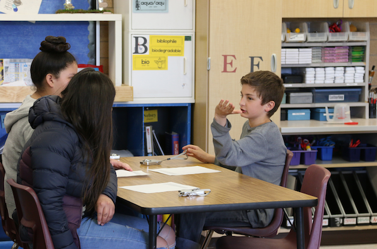
Allow students time to share thoughts and feelings. Remind students about the importance of looking at things from different perspectives. Reiterate that this is one of those times when we are able, for just a brief moment, to see how progress for one can sometimes mean decline or digression for others and to witness a part of history that we seldom hear about.
Teacher: Events like this in history can make us feel sad and even sorry, but there is another way to look at hard things. We can learn from them and decide to not let history repeat itself. What can we learn from this time in history? How can we become more responsible citizens? We can choose to move forward in positive ways.

Allow students to share their ideas. Emphasize that change comes in small ways, such as thinking of how our choices impact others. One example is to think of ways to balance our desires and needs with the needs and desires of others, such as our desire to use a part of the playground when someone else is already using the area or equipment. Other examples may include our need to use materials in the classroom or our desire to be first in a game or in a line. All these things are small changes we can make to move forward in positive ways.
A Creative Mindset
Teacher: When we think about the Native Americans’ dependence on the bison and their attention to minimal waste, there are questions that we can ask about how they were able to find the many uses for every part of the bison.
Have a discussion using the following questions:
- What can we learn from Native Americans in the use of the bison?
- In what ways can we be resourceful like the Native Americans?
- What kind of mindset do you need in order to come up with uses for things?
- Are there ways we can change how we view items we would normally throw away?
Teacher: In the art world, there is a type of art called found object art. It is a translation of a French phrase objet trouvé. It is art created from found objects that would normally be used for another purpose. The founder of found object art is Marcel Duchamp. One of his most influential pieces is one titled Bicycle Wheel.
Explain that, much like the Native Americans, artists need to be creative with the medium they choose to use. Share with students the following steps (slide 10) that some people who study creativity see as steps to the process of creating:
- Notice a problem or have an idea, or even a question you want to solve.
- Gather information by asking questions.
- Make connections between things that don’t relate.
- Acknowledge “eureka” moments; be inspired.
- Put inspiration into practice by making, creating, and doing.
- Complete and test your creation.
Teacher: Today I want you to practice your creative thinking by using the steps we just read. I asked you to bring items that would have been normally discarded into the trash receptacle. Your assignment today is to work as artists in a group and create an animal using your found objects.
Share slides 11 and 12 as examples of found art. Give students time to work on their found art. Side-coach groups and help them to utilize the creativity steps if they get “stuck.” When the art is completed, decide how it will be displayed. On a 3x5 card, have students write a title and each artist’s name.
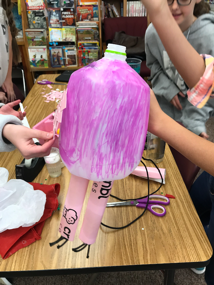


Conclusion
Wrap up the lesson by reinforcing the need to see history through multiple perspectives and learning from our past. Also, encourage students to be open to the creative process that many times leads to survival and great art!

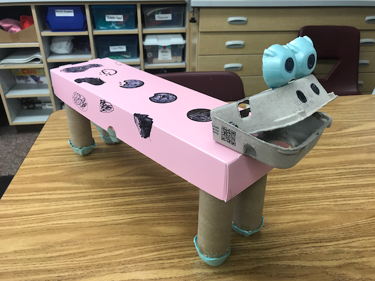
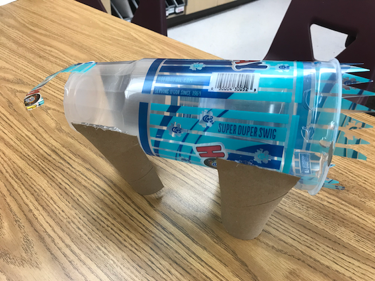
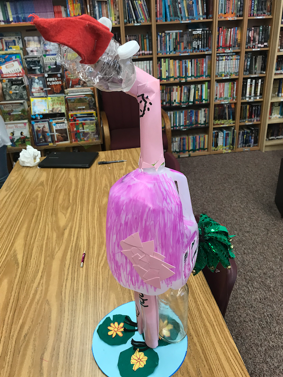
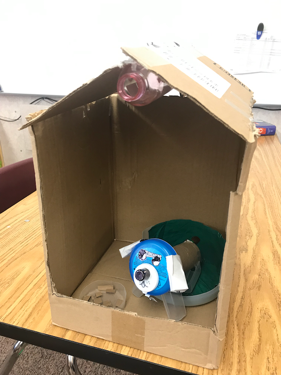
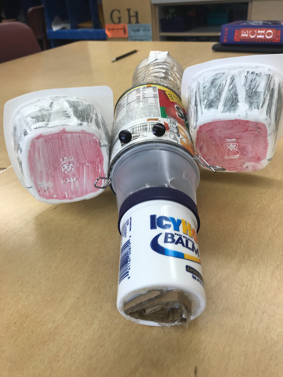
Learning Objectives
- Contribute to discussions, draw conclusions, and respond to questions.
- show understanding of the consequences and impact of the building of the Transcontinental Railroad on Native Americans and the bison.
- Generate ideas, create innovative art, use materials safely, and present artwork.
- Respond in character in an improvised scene.
Utah State Board of Education Standards
This lesson can be used to meet standards in many grades and subject areas. We will highlight one grade’s standards to give an example of application.
Grade 5 English Language Arts
- Standard 5.SL.1: Participate effectively in a range of conversations and collaborations using age-appropriate vocabulary, on topics, texts, and issues.
- Respectfully acknowledge and respond to comments and claims from multiple perspectives and determine if additional information is needed.
- Participate in conversations by asking questions, acknowledging new information, qualifying or justifying responses with reasoning and elaboration, and keeping the discussion on topic.
Grade 5 Social Studies
- Standard 5.4.1: Use evidence from multiple perspectives (for example, pioneers, 49ers, Black Americans, Chinese Americans, Native Americans, new immigrants, people experiencing religious persecution) to make a case for the most significant social, economic, and environmental changes brought about by Westward Expansion and the Industrial Revolution.
- Standard 5.4.2: Use primary sources to explain the driving forces for why people immigrated and emigrated during the 19th century, as well as the ways that movement changed the nation.
- Standard 5.4.3: Summarize the impacts of forced relocation and assimilation on Native American people and how they have preserved their communities in the face of such adversity.
Grade 5 Visual Arts
- Standard 5.V.C.1: Combine ideas to generate an innovative idea for art-making.
- Standard 5.V.P.2: Develop a logical argument for safe and effective use of materials and techniques for preparing and presenting artwork.
Grade 5 Drama
- Standard 5.T.P.3: Observe, listen, and respond in character to other actors throughout a scripted or improvised scene.
- Standard 5.T.R.1: Demonstrate audience skills of observing attentively and responding appropriately.
Equipment and Materials Needed
- “The Great American Bison” PowerPoint presentation
- Found items brought into the classroom by students
- Hot-glue guns and glue sticks
- Art materials such as markers, paints, and crayons
Additional Resources
This lesson was created thanks to a grant from the National Endowment for the Arts and the Utah Division of Arts & Museums.
- This is one of several lessons created to teach about the transcontinental railroad. The other lessons include the following:
- “Transcontinental Railroad—David Dynak” creating context PDF
- “21 Red-Hot Process Drama Tools” from text: https://education.byu.edu/arts/resources/drama
- “Marcel Duchamp and the Readymade”: https://www.moma.org/learn/moma_learning/marcel-duchamp-bicycle-wheel-new-york-1951-third-version-after-lost-original-of-1913/
- “Thought Tracking”: https://dramaresource.com/thought-tracking/
- “Sacred Buffalo People”: https://www.youtube.com/watch?v=33zB7JhKkpg
- “New Perspectives on the West”: http://www.pbs.org/weta/thewest/program/episodes/five/whitemanspipe.htm
- “Building the First Transcontinental Railroad, Introduction”: https://dp.la/exhibitions/transcontinental-railroad/history/
- “Building the First Transcontinental Railroad, Native Americans”: https://dp.la/exhibitions/transcontinental-railroad/human-impact/native-americans?item=937
- “Where the Buffalo No Longer Roamed”: https://www.smithsonianmag.com/history/where-the-buffalo-no-longer-roamed-3067904/
- “What Part of the Bison Was Used?”: https://allaboutbison.com/what-part-of-the-bison-was-used/
- “How Many Ways Can You Use a Buffalo?”: https://texasbeyondhistory.net/kids/buffalo.html
Image References
Image 1: “Across the Continent: Westward the Course of Empire Takes Its Way”: https://images.nga.gov/en/search/do_quick_search.html?q=%221985.64.160%22
Images 2–4: Brenda Beyal.
Image 5: www.sd4history.com
Images 6, 7: Brenda Beyal.
Images 8–10: Rachel Jackson.
Images 11–16: M. Daugherty.

www.education.byu.edu/arts/lessons
 Download
Download